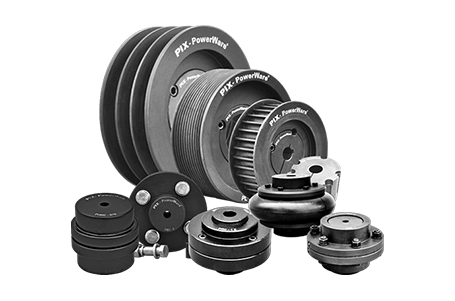- About
- Products
-
Applications
- Industrial
- Automotive
- Agriculture
- Lawn & Garden
- Ceramic
- Cold Storage
- Food Processing
- Domestic Appliances
- Cement
- Leisure & Sport
- Machine Tools
- Mineral Ore Mining
- Oil & Gas
- Packaging
- Paper & Pulp
- Pharmaceutical
- Power Plant
- Rice/Flour Mill
- Steel
- Textile
- Forestry & Wood Working
- Buildings & Construction
- Recycling
-
Accessories
 PIX-Collapsible-Belt Length Measure
PIX-Collapsible-Belt Length Measure PIX-Belt Drive Service Kit
PIX-Belt Drive Service Kit PIX-Digital Tension Meter
PIX-Digital Tension Meter PIX-X'Align Lasertool
PIX-X'Align Lasertool PIX-Belt Length Measure
PIX-Belt Length Measure PIX-Analog Tension Tester
PIX-Analog Tension Tester PIX-Belt Profile Gauge
PIX-Belt Profile Gauge PIX-Pulley Gauges
PIX-Pulley Gauges PIX-Pulley Guage Banded Belts
PIX-Pulley Guage Banded Belts PIX-Pentagon Poly-V Belts Wear Gauge
PIX-Pentagon Poly-V Belts Wear Gauge PIX-Pentagon Timing Belt Wear Gauges
PIX-Pentagon Timing Belt Wear Gauges PIX-X'Slit Belt Cutting Machine
PIX-X'Slit Belt Cutting Machine
- Media
- Sustainability
- Careers
- Contact
Introduction
Pulleys are simple tools that make work easier. They help lift heavy objects, move power, and change the direction of force.
You can find pulleys in machines, cars, and factories. They work with rubber V belts and fan belts to move parts smoothly and efficiently.
This guide will explain the different types of pulleys, how they are used, and tip to choose the right pulley and belt system for your equipment

Understanding Pulleys: The Basics
Pulleys make work easier by changing the direction of force or spreading it over a longer distance. They are used to lift heavy objects, move machinery, and transfer motion efficiently.
Key parts of a pulley system include:
- Pulley Wheel: The rotating wheel that guides the belt or rope
- Axle: The rod that allows the wheel to turn
- Belt or Rope: Transfers power or force between pulleys
Types of Pulleys: Varieties and Uses
There are several types of pulleys, each serving a different purpose:
- Fixed Pulley: Attached to a stationary point. It changes the direction of force but does not reduce effort.
- Movable Pulley: Moves with the load. It makes lifting easier by reducing the effort needed.
- Compound Pulley (Block and Tackle): Combines fixed and movable pulleys to lift heavier loads with less effort.
- Cone Pulley: Has multiple grooves of different sizes, allowing speed changes in machines.
- Swivel Pulley: Can rotate, letting you change the direction of the belt or rope easily.
The Interplay between Pulleys and Belts
- Rubber V Belts: Fit into the grooves of pulleys and transfer power efficiently.
- Fan Belts: A type of V belt used in cars and machines to drive components like fans and alternators.
- Working Together: Pulleys and belts ensure smooth movement, reduce wear, and keep machines running longer.
Maintenance Tips for Pulleys and Belts
- Check Regularly: Look for cracks, wear, or misalignment in belts and pulleys.
- Adjust Tension: Belts should be tight enough to work but not so tight that they strain the pulley
- Lubricate Bearings: Helps reduce friction and extends the life of the pulley system.
- Replace Worn Parts: Changing worn belts or pulleys prevents breakdowns and keeps machines safe.
Choosing the Right Pulley and Belt System
When selecting pulleys and belts, consider:
- Load: How heavy the objects are that you need to move.
- Speed: How fast you want the parts to move.
- Environment: Conditions like heat, humidity, or dust that could affect performance.
Conclusion
Pulleys are simple tools, but they are vital for mechanical efficiency. Using the right pulleys and belts improves performance, reduces wear, and ensures smooth operation.
Regular maintenance and proper selection can keep machines running safely and efficiently for years.
Looking for high-quality pulleys, rubber V belts, and fan belts? Contact Pix Middle East today to get the right components for your mechanical systems in Dubai.
